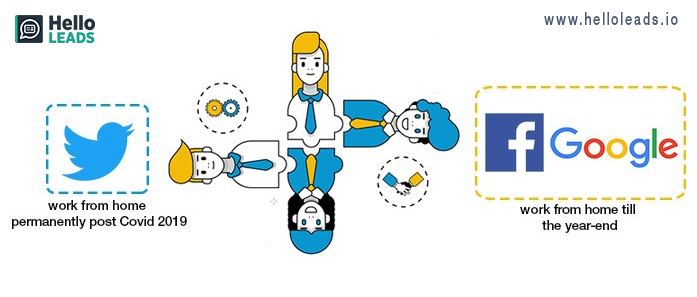
It is close to two months of working from home. Many technology companies are wondering post-covid what directions they need to take for future – continue to work from home, resume operations at office fully or have some kind of mixed approach.
For example, Twitter plans to have all its employees to work from home permanently post Covid 2019. Facebook and Alphabet (Google) and few others have asked their staff to work from home till the year-end. Microsoft has extended its work from home policy till end of October 2020.

TCS an Indian IT Services major with operations across the globe has come out with a new model for post-coronavirus. By 2025, TCS will ask 75% of its 4.48 lakh employees globally, including 3.5 lakh in India, to work from home. The current industry average of work from home is 20%. The new model called 75 by 25 will require far less office space.
As per Business Today article, TCS’s Chief Operating Officer NG Subramaniam said “We don’t believe that we need more than 25% of our workforce at our facilities in order to be 100% productive”.
Moving to work from home involved good amount of logistics for technology companies. Many Indian IT majors even moved desktops to the homes of employees as they could not procure laptops in large numbers or in certain cases the work was such that it needed to be done on desktops. It was a logistics challenge moving desktops to thousands of employees’ homes. TCS alone had to shift 40,000 desktops to the homes of employees. Added to this is connectivity, audio and video accessories, space and data security challenges.
Other technology majors and service providers will also follow a similar model which will result in rapid “virtualization” of business operations and practices in the next few months.
Government policies on such a model, client permissions for working from home to ensure compliance and security, cyber and Information security issues, productivity and employee morale are other challenges that are to be taken into account during work from home model.
On the other hand, people like Satya Nadella, CEO of Microsoft feels making remote work permanent could have serious consequences for social interaction and mental health, as video calls cannot replace in-person meetings, says an article by The Time of India.
One thing is for sure – technology campuses are never going to be the same. Post Covid 2019, we expect all technology companies to ask its employees to work from home for a significant part of a month or year.
One model is to make all people permanently work from home. In this model you do not need an office space or you need a much smaller one.
Another is mixed approach i.e. you ask teams to work from home on most of the days and by rotation each team can come to office on 1 or 2 days in a week. Team A comes on Mondays and Thursdays. Team B comes on Tuesdays and Fridays. Team C comes on Wednesdays alone, for example. Or each team comes one day a week to office for meetings and reviews.
It is easy to move to a fully work from home model if the work involves transaction intensive processes such as business process outsourcing (BPO). Judgement intensive work will need face to face interactions at times. Creative and collaborative work such as designing or developing software may need more direct face time to improve communication and speed of development.

Smaller technology companies and start-ups can work fully from home where as mid-sized or large technology companies will have to have certain number of people at office.
Also use of technology can determine if a team can work from home or not. For example if you have a cloud based accounting system which can store scanned copies of documents, bills and invoices and if all of your money transactions are thorough banking channels, then your accounting function can very well be managed remotely.
HR functions need to evolve to be able to hire employees remotely, onboard them remotely and even relieve them remotely. We need to have certain processes and technologies to be able to do this.
Collaboration and communication Tools such as Slack and Zoom can help in managing operations remotely. Sales can be managed remotely using cloud-based tools – say HelloLeads or Zoho.
I am sure like us, all the organizations are now in this post covid dilemma – Continue work from home or get back to office?
Taking cognisance of the above factors, deliberate with your senior members in the team and arrive at a model that suits your organization, nature of business and the level of technology and tools you have.
We all need to continue to work and focus our energies in creating or keeping customers, whether we work from home or office, Covid or no Covid.
Share this blog :










